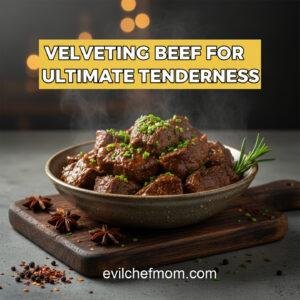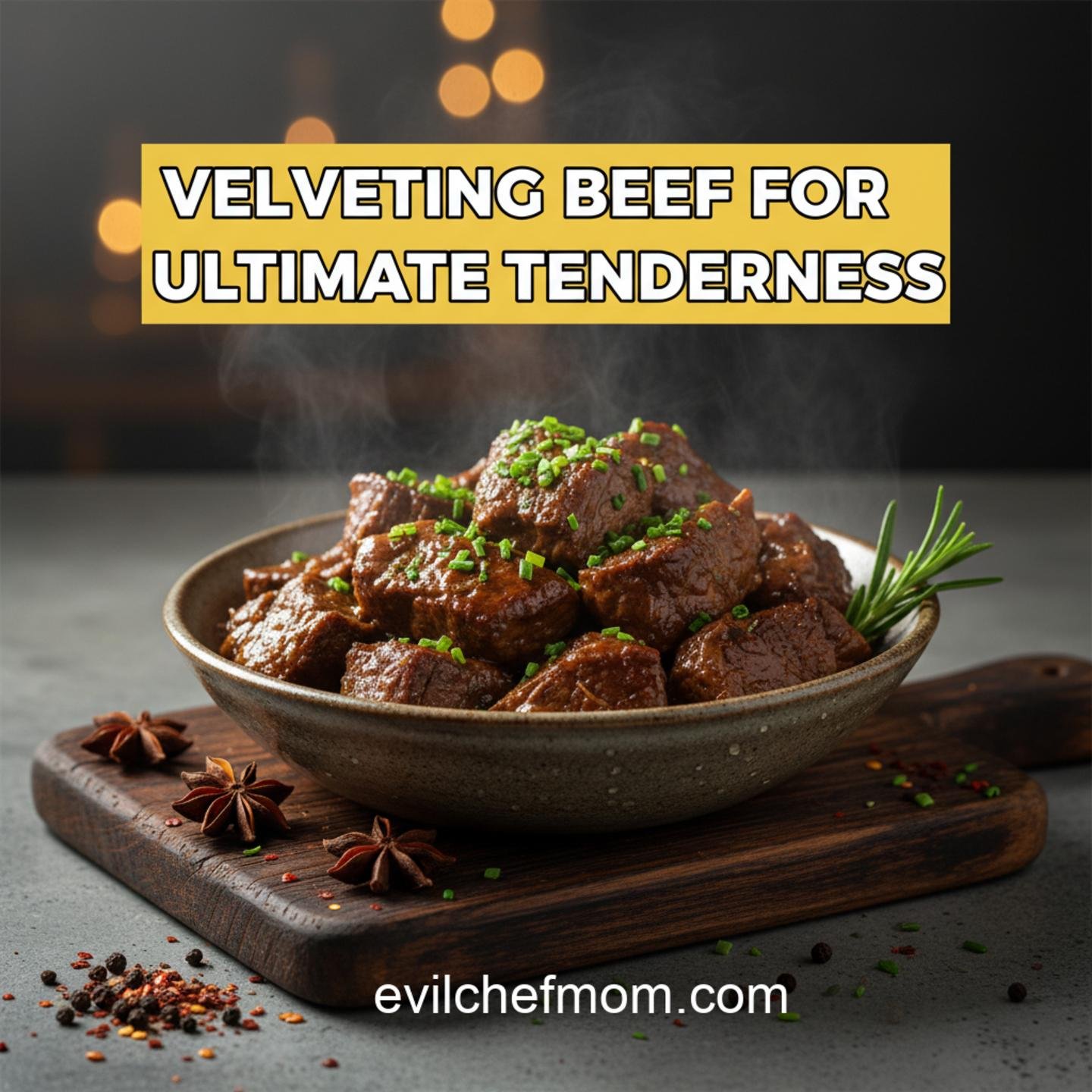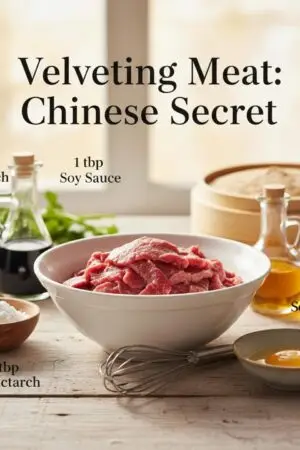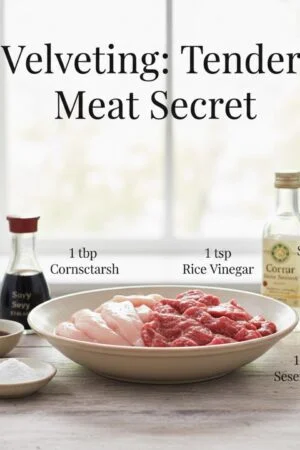A classic Chinese culinary technique used to tenderize beef, creating a silky-smooth texture and preventing it from becoming tough during high-heat cooking like stir-frying. This method ensures incredibly juicy and flavorful results.

Velveting Beef for Ultimate Tenderness
A classic Chinese culinary technique used to tenderize beef, creating a silky-smooth texture and preventing it from becoming tough during high-heat cooking like stir-frying. This method ensures incredibly juicy and flavorful results.
Ingredients
- 500 gram beef (flank steak sirloin
- 0.5 teaspoon baking soda
- 1 tablespoon soy sauce
- 1 teaspoon Shaoxing wine (optional)
- 0.5 teaspoon sesame oil
- 1 tablespoon cornstarch
- 1 tablespoon water or 1 egg white
Instructions
- Slice the beef against the grain into thin strips, about 1/8 to 1/4 inch thick. The thinner the slices, the more effective the velveting process.
- In a bowl, combine the sliced beef with baking soda, soy sauce, Shaoxing wine (if using), and sesame oil. Mix well to ensure the beef is evenly coated. Let it marinate for 20-30 minutes at room temperature, but no longer than 30 minutes to avoid a metallic taste.
- Rinse the marinated beef thoroughly under cold running water for 1-2 minutes to remove the baking soda. Squeeze out excess water gently. Pat the beef very dry with paper towels.
- In a clean bowl, toss the dried beef with cornstarch and water (or egg white). Mix until each piece is lightly coated. This forms a protective layer that keeps the beef moist during cooking.
- Let the beef rest for at least 15 minutes. It is now ready to be cooked. For stir-frying, cook in small batches in a hot wok or pan to achieve a quick sear without overcrowding. Remove from the pan once cooked and add back to the dish at the end to avoid overcooking.
Notes
This velveting technique is ideal for stir-fries, noodle dishes, and any recipe where tender beef is crucial. For best results, use flank steak, sirloin, or top round. Adjust baking soda amount based on beef quantity. You can substitute cornstarch with tapioca starch for a slightly different texture.






